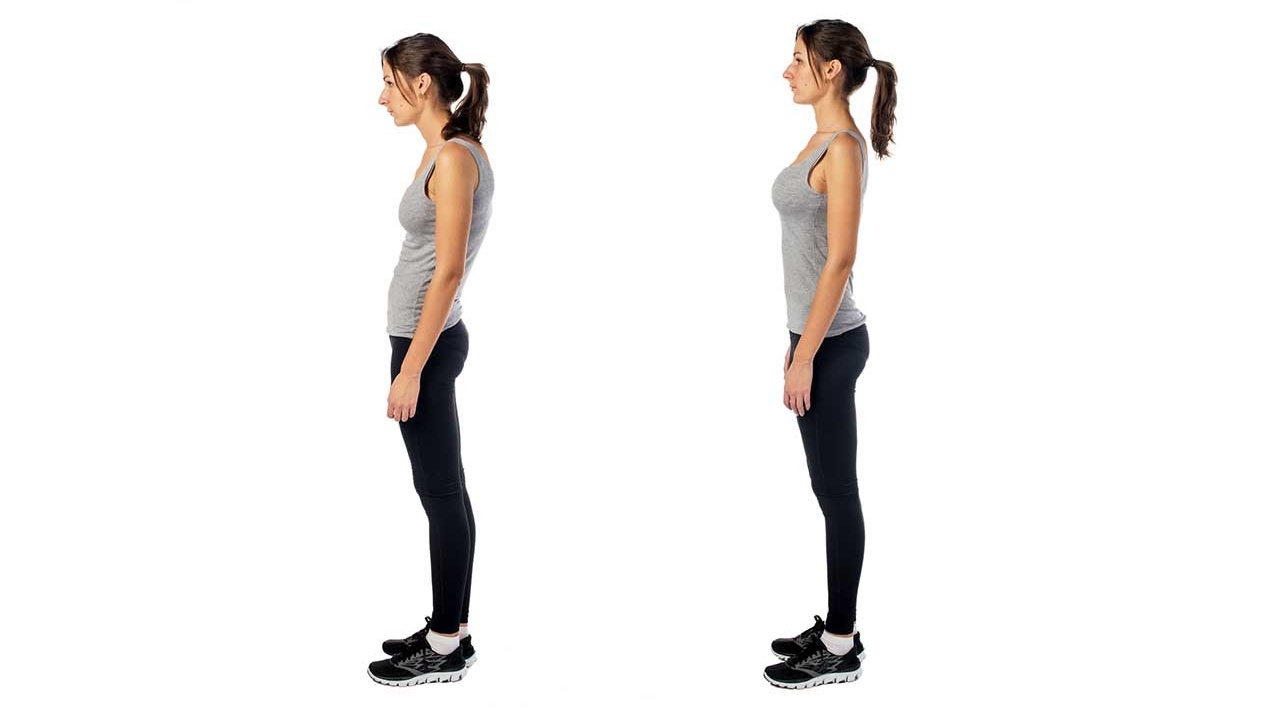Troubleshoot Your Standing Posture

Modern lifestyle, repetitive body movements or positions (such as a lot of time spent sitting, or bending down with small children), and pregnancy can all play havoc with your posture. If we can stand better, it helps prevent muscles from becoming imbalanced by overworking or underworking, and may help alleviate or correct pain in areas such as the lower back or neck.
We tend to think the act of standing is simple, but there are a lot of parts to it and as the body works as one, when one area is out of alignment it can throw something else out up or down the body.
When troubleshooting your standing posture, start at the ground and check in with each of the following parts of the body, working your way up. You might find that when you adjust something, a correction you've previously done may unravel.
See if you can breathe freely and with ease down to your belly once you're in position. There are so many check points it can be difficult to not hold your breath/stand rigidly, but we want to be able to do this with ease. This is the yoga pose Tadasana.
Just keep practicing and it will improve over time!
Feet
- Stand with feet hip-width apart.
- Toes point forwards.
- Toes slightly spread apart.
- Even weight between toes, ball of foot and heel.
Knees
- Kneecaps face straight forwards.
- Soft bend in the knees (not locked out).
Pelvis/Hips
- Keep pelvis level (not tilted forwards/belly out, not tilted back/belly tucked, keep it in between the two).
- Check hips are level (one not higher than the other). Take hands on hips to feel that they are even.
Ribs
- Stack ribs over the top of your pelvis.
- Not flaring forwards (arched back) or in too far (hunched back). Find the mid-point in between the two.
Spine
- Stand tall - but not too tall to the point where you chest puffs forwards. Think about lifting up through the crown of your head (the top, back), like someone is grabbing your hair in a ponytail and lifting it straight up above you.
Shoulders
- Keep them relaxed down, feel your shoulderblades drop at the back.
- Check they aren't rounded forwards. Top of the arm bone should sit in the shoulder socket.
- Don't pull shoulders back too far for chest to puff forwards.
Head and Neck
- Bring chin in a little so that your spine lengthens at the back of the neck (the head is heavy and spine is designed to be stacked under it for support).
- Chin shouldn't be lifted for the head to tilt, keep it level.
Image / Depositphotos









